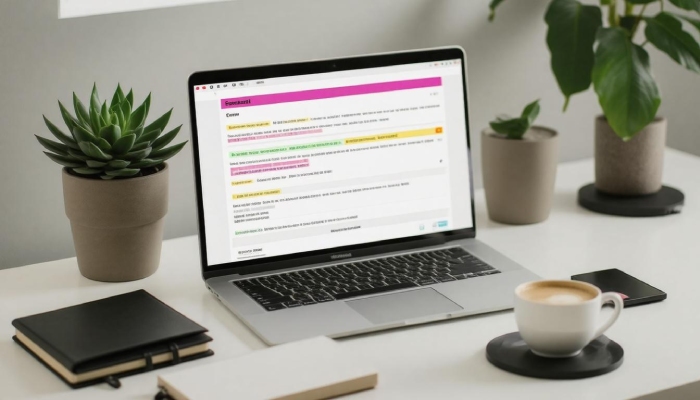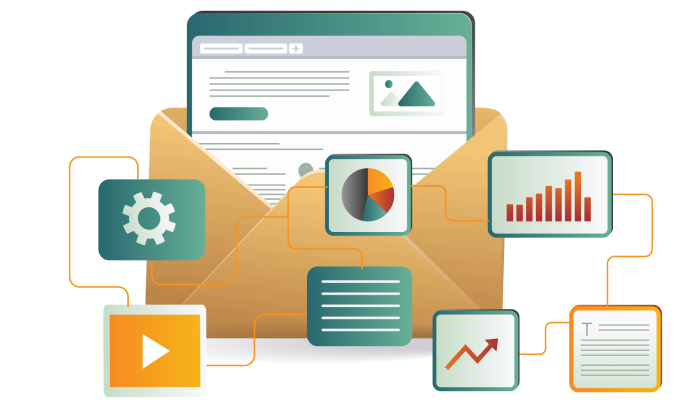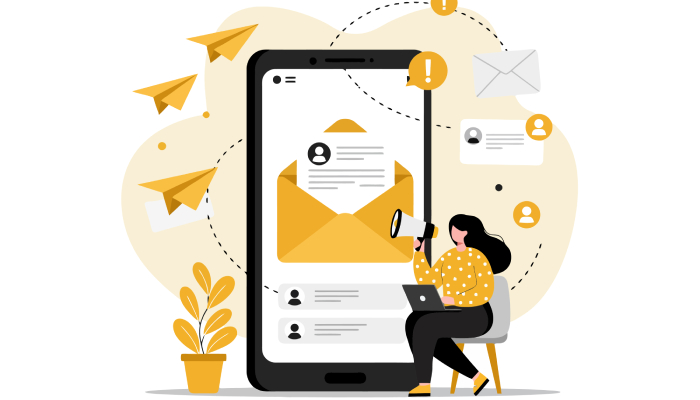Catchy Sales Email Subject Lines: Effective Tips and Strategies
In a world overflowing with emails, how do you ensure that your message doesn’t end up lost in the abyss of unread inboxes? It all begins with an eye-catching subject line. Just like a book cover that draws readers in, your email subject line is your first—and often only—chance to grab attention and encourage action. Crafting an irresistible subject line might seem straightforward, but it requires a thoughtful blend of creativity and strategy.
After spending countless hours researching and refining these techniques, I found that even small tweaks can lead to significant differences in open rates. So, let’s dive into some effective tips and strategies to elevate your sales email game!
Catchy sales email subject lines include options like “{Company Name} + {Prospect Name}”, “Can I help?”, and “X things smart {prospect’s role}s do”. These subject lines effectively capture attention by personalizing the message, addressing specific challenges, or referencing timely topics relevant to the recipient.
Crafting Successful Sales Email Subject Lines

When it comes to crafting sales email subject lines, each word must serve a purpose, representing not just a hook but a promise of value. With countless emails landing in your inbox daily, you have mere seconds to capture attention and encourage clicks. This is where creativity and directness become your best allies.
Use Power Words
Words that evoke strong emotions are invaluable in great subject lines. For instance, terms like “Free,” “Urgent,” and “Exclusive” grab attention and prompt action by creating an emotional connection or a sense of urgency. Research shows that emails containing these power words can see up to a 22% increase in open rates. That’s a substantial difference when striving for higher engagement.
However, it’s crucial to use these power words judiciously; overusing them can come across as spammy rather than persuasive. Striking the right balance takes practice, but the results can significantly drive response rates.
Be Specific and Clear
Another major factor influencing your open rates is clarity. Vague subject lines often lead recipients to feel disconnected or confused, causing them to ignore the email entirely. Aim for specificity, clearly outlining what recipients should expect upon opening the email.
For example, consider a subject line such as “Exclusive 20% Discount on New Arrivals.” Here, potential customers are immediately drawn in by the offer and understand its relevance.
Rebecca Marte, an experienced email marketing specialist, aptly notes:
“Specificity drives clicks. When recipients know exactly what to expect, they are more likely to engage.”
The more precise you are with your language, the more likely you are to incentivize your audience to take action.
In addition to power words and clarity, personalization plays an important role in crafting compelling subject lines that cut through the noise of a crowded inbox.
Personalization Matters
Tailoring emails by using recipients’ names or referencing their interests brings a personal touch that can significantly increase open rates—by as much as 26% according to studies. Rather than treating each recipient as merely another entry on your list, speak directly to their needs and preferences. Instead of saying “Special Offer,” you could say “Sarah, Your Special Offer Awaits.” Simple tweaks foster a connection that generic approaches cannot achieve.
Create Urgency
Lastly, don’t underestimate the power of instilling urgency in your subject lines. Incorporating time-sensitive phrases like “Limited Time!” or “Offer Ends Tonight!” compels recipients to act quickly out of fear they might miss out on something valuable. Subject lines with urgency can boost open rates by around 22%. Just remember it must resonate authentically with the content of your email for maximum effectiveness.
As you reflect on these strategies for creating effective sales email subject lines, keep experimenting with different styles and analyses of past successes.
With these insights at hand, we can now explore practical instances that illustrate how to implement these techniques effectively.
Examples to Inspire You

One of the biggest challenges in crafting an engaging subject line is tapping into the right mix of personalization and urgency. The examples provided encompass a variety of techniques that can be effectively utilized in your outreach efforts.
For instance, the subject line, “Can I help you with [pain point]?” connects directly to a potential issue the recipient might be facing. This makes it immediately relevant and positions you as someone who is looking to provide a solution rather than just pushing a sale.
Moreover, utilizing mutual connections is not just a clever tactic; it’s supported by data. Subject lines like “[Mutual connection] recommended I reach out” establish trust and familiarity that can significantly increase open rates. According to Salesloft, this approach resulted in a 23% higher response rate. It’s worth reflecting on how leveraging shared contacts can make your email stand out in the crowded inboxes of potential clients.
The whimsical subject line, “Have you been eaten by Alligators?!” demonstrates another important principle: captivating curiosity. Such lines are eye-catching and foster engagement because they provoke questions in the reader’s mind about the content of the email. Remember, humor can be a double-edged sword; while it may draw attention, ensure it’s appropriate for your audience.
Additionally, “X things smart [prospect’s role]s do” is an effective strategy that plays on a desire for knowledge and actionable insights. When people think they will learn something valuable or gain tips relevant to their position, they are more likely to open the email out of sheer curiosity. Providing bare-bones insights tailored to an individual’s role positions you as an informed resource.
Lastly, “[Recipient Name], a quick solution for [problem]” is a straightforward yet powerful way to address specific pain points directly. Personalization here elevates the connection between you and the recipient, making it feel tailored specifically for them rather than a generic pitch.
These exemplary subject lines illustrate not just creativity but also how effective strategies can engage potential clients. By building on these ideas, we can further explore essential components to enhance email outreach effectiveness.
Key Elements to Include

One essential aspect of crafting strong email subject lines is brevity. Research shows that subject lines containing six to seven words achieve around a 15% higher open rate, making a significant difference in crowded inboxes. When skimming through a sea of emails, a concise subject line stands out, delivering its message quickly.
For instance, instead of saying “I wanted to reach out to discuss your recent inquiry regarding our marketing services,” you could simply say “Your Marketing Inquiry.” This streamlined approach helps recipients grasp the intent of your email at a glance.
Now that we’ve covered brevity, let’s talk about personalization, another critical factor in creating engaging subject lines.
Personalization goes beyond inserting a name or company; it involves tailoring the message to resonate with the recipient’s unique situation or interests. For example, phrases like “John, let’s talk about boosting your Q3 sales” imply familiarity—a signal that this isn’t just another generic email. The impressive statistic that personalized subject lines can increase open rates by up to 26% underscores their impact.
When recipients feel acknowledged, they’re more likely to engage, conveying effort on your part and fostering an ongoing connection that builds rapport necessary for effective sales.
Understanding what resonates is vital, and this naturally leads us into the concept of relevance in your subject lines.
To keep your prospects engaged, ensure your subject line delivers valuable information or addresses pain points they are currently experiencing. A phrase like “Boost Traffic By 30% in 30 Days” communicates a specific benefit and piques curiosity. Recipients faced with challenges who see such compelling promises are drawn in—curiosity breeds action. Your subject line should raise questions like “How can I achieve that?” which opens the door for engagement and further discussions.
With these vital elements in mind, we now pivot towards exploring ways to make messages even more impactful by focusing on the individual characteristics and needs of each recipient.
Personalization Strategies

Personalization isn’t merely about adding someone’s name to the greeting; it’s about creating an experience tailored specifically for them. When crafting sales emails, think of it like throwing a dinner party. You wouldn’t serve a one-size-fits-all meal but instead consider your guests’ preferences and dietary restrictions. Understanding your recipients’ needs and interests can help you tailor your messaging effectively, making them feel valued and seen.
Utilizing Name and Role
Research shows that using a recipient’s name can increase open rates significantly—by as much as 26% according to studies. However, simply inserting a name isn’t quite enough. It’s also helpful to reference the person’s role within their organization. For instance, “Marketing Tips Just for You, ” communicates not only familiarity but also relevance to their specific responsibilities. This simple yet effective strategy speaks directly to their professional context and demonstrates that you understand what they do.
But personalization can extend beyond names and roles—and it should.
Referencing Past Interactions
One powerful technique is referring to any past interactions you’ve had with the prospect. For example, starting an email with “Following up on our conversation, [Name],” helps create continuity in your relationship. By referencing a previous discussion or meeting, you remind the recipient of their connection to you, which heightens familiarity and trust while setting the stage for meaningful dialogue. This continuation affirms that you’re not just another salesperson: you’re someone who values their time and input.
Citing Shared Interests
Establishing common ground with prospects enhances relatability. If you’ve read something about them, such as a recent blog post or social media update on a topic they’re passionate about—mention it! A subject line like “Loved Your Thoughts on [Topic], [Name]!” can break through the clutter of generic pitches. It signals that you are aware of their interests and have taken the time to engage sincerely with their ideas. This approach fosters relationship building and increases your chances of receiving a positive response.
Keeping It Authentic
Throughout these personalization strategies, authenticity should be your guiding principle. Prospects today can often spot disingenuous attempts at personal connection from a mile away. Instead of relying on blanket templates minimally customized with names or roles, ensure every component of your email reflects genuine interest in solving their unique challenges or contributing positively to their objectives.
As we transition from personalizing messages, attention-grabbing tactics will further enhance your outreach efforts. Let’s investigate effective strategies designed to ensure your subject lines pop in a crowded inbox while maintaining that personal touch.
Attention-Grabbing Techniques

A subject line acts as a digital doorway; if it doesn’t entice recipients to step through, the message within remains unread. One of the most powerful tools at your disposal is urgency. By subtly nudging a prospect with terms like “Last Chance” or “Limited Time Offer,” you awaken their concern over missed opportunities. This sense of urgency can inspire quick action, boosting the chances they’ll open your email right away.
Imagine receiving an email titled, “Only 2 Days Left to Claim Your Discount!” The immediate thought is likely a sense of potential regret if left unopened. That feeling captures attention—this technique effectively leverages the fear of missing out, and research backs this up. Subject lines incorporating urgency lead to notably higher open rates as the brain responds quicker when it senses pressure.
Nureply campaigns have also shown that thought-provoking questions in subject lines can drive curiosity and engagement, often leading to even higher open rates.
Ask Intriguing Questions
Related to urgency is another brilliant strategy: framing your subject lines as questions. Posing a thought-provoking question like “Are You Ready to Boost Your Productivity?” encourages prospects to engage mentally before they’ve even clicked on your email. This method invites recipients to reflect on their own needs and potentially seek answers, leading them straight to your email for more insight.
Research by Mailchimp highlights that questions in subject lines have shown a substantial increase in open rates—up to 12% more than traditional statements. This creates a conversation before it even begins!
Use Emojis Wisely
Another trend gaining traction is the use of emojis in subject lines; with emojis now peppering our digital communications, they inject a playful element into what can often feel monotonous. According to a study by Experian, using emojis can boost open rates by 29%. However, caution must be exercised. While an emoji may spark interest in one industry, it could yield an unprofessional impression in another.
Striking the right balance is crucial; consider the taste of your audience and the perception you aim to craft. A well-placed emoji can liven up a subject line without overwhelming the professional tone you might wish to maintain.
Capture Their Interest with Humor
Crafting memorable subject lines can also hinge upon creativity through humor. Using light-hearted humor can break through inbox clutter while fortifying rapport with your prospects. Subject lines like “Have You Been Eaten by Alligators?!” establish an entertaining tone and stir curiosity that leads to opens.
However, humor should always be weighted against context—what lands with one audience might flop with another. Knowing your audience will guide whether humor enhances engagement or detracts from it.
With these strategies, you’ll enhance your email open rates significantly. As you explore various techniques, keep in mind that different audiences respond uniquely; finding what resonates best requires thoughtful application and precise analysis.
With these attention-grabbing methods established, it’s time to shift our focus towards how we can systematically assess and improve effectiveness to ensure every outreach counts.
Analyzing and Improving Performance

Understanding how well your emails perform is essential. Without proper analysis, it’s difficult to pinpoint what works effectively and what might need adjusting. This is where the power of A/B testing comes in; it allows marketers to gain valuable insights into which types of subject lines resonate best with their audience.
Imagine sending two versions of an email with slightly different subject lines to different segments of your list. The results can directly show you what draws readers’ attention.
Track Metrics
Keeping a close eye on key metrics is vital for understanding the effectiveness of your campaigns. Focus on open rates, click-through rates, and response rates, as these indicators signal engagement. Utilizing tools like Google Analytics or specialized email marketing platforms such as Mailchimp and HubSpot can provide detailed insights into these metrics.
For example, if you notice higher engagement with subject lines that contain personalization (“Hi John, check this out!”), then you may want to incorporate this style more frequently.
Metrics are your compass in the vast world of email marketing; they guide you toward what resonates without wasting resources on ineffective strategies.
Adjust Based on Feedback
Continuous improvement should be at the forefront of any marketing team’s strategy. Take for instance a scenario at NextGen Solutions; after noticing a dip in open rates over several weeks, their marketing team decided to revise their subject lines completely. They brainstormed fresh ideas, incorporated elements of urgency, and tested various formats. Within a month, they reported a dramatic increase in engagement metrics across the board.
This experience underlined the importance of feedback loops; listening to trends and adjusting based on data kept their strategy relevant and effective.
By routinely reviewing your performance metrics and employing insightful adjustments, you position yourself to cater more closely to your audience’s evolving interests.

Review the Competition
One simple yet effective way to refine your cold email strategies is to keep tabs on what competitors are doing with their subject lines. Look at their email marketing campaigns aimed at similar audiences—but remember, don’t simply copy them verbatim. Instead, aim to identify ongoing trends: Are humor-based subject lines performing better? Are thought-provoking questions leading to higher open rates?
By examining these patterns, you can adapt those successful strategies while infusing them with your unique voice and business goals.
Your subject lines don’t just serve as gateways; they represent your brand’s personality too. By striking a balance between creativity and best practices derived from competitor analysis, you’ll capture interest and foster lasting connections.
By implementing these techniques and maintaining a cycle of refinement, you will undoubtedly achieve consistently higher open rates, ultimately driving more sales through effective email marketing campaigns.
In navigating the intricate landscape of email marketing, a strong focus on performance analysis ensures that you’re not only capturing attention but also forging genuine connections with your audience. Embrace the challenge of crafting compelling subject lines that resonate deeply and drive action.



